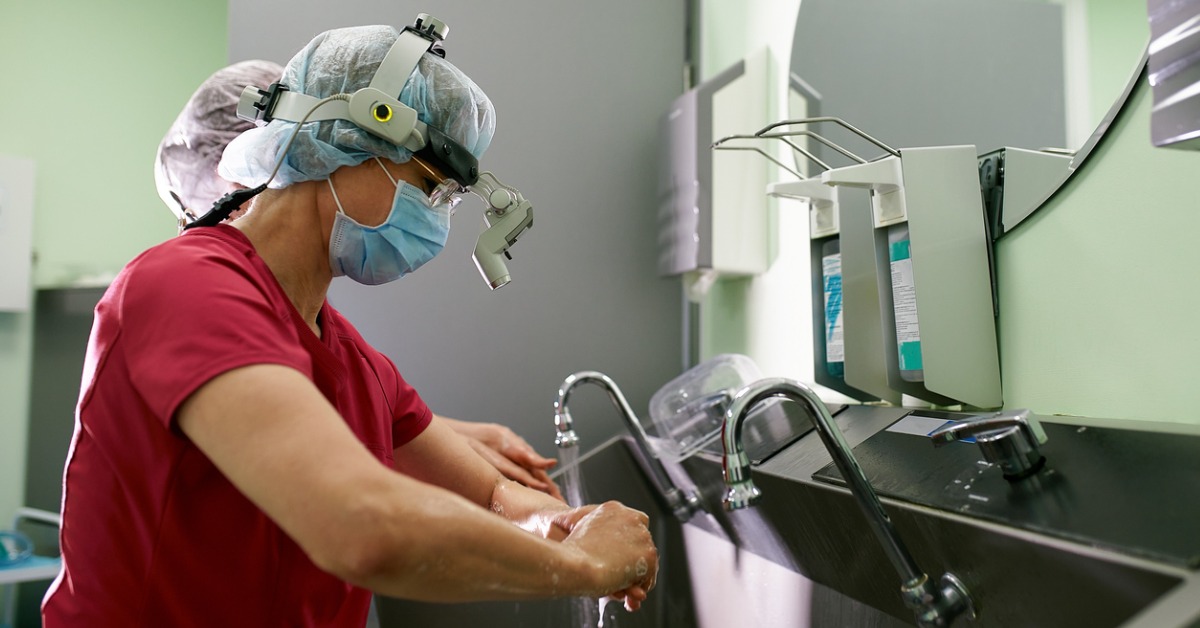
To most people, drains are grotty but harmless enough. Until you uncover their ability to harbour infectious disease. Given the right environment, a drain for a sink or shower can spread disease from one residence to another, meaning your home may not be as safe as you thought.
What are the Routes of Transmission of Infectious Disease?
The route of transmission is the way pathogens including viruses, bacteria, parasites and fungi spread to infect a person or animal. Knowing the most common routes can help control and prevent infections from occurring.
Common Routes of Disease Transmission
Disease can be transmitted directly or indirectly. Person to person contact is one form of direct transmission where a person with an infectious disease touches or exchanges body fluids with another person. When in close proximity with each other an infected person’s cough, speech or sneeze droplets can spread illness and disease.
Transmission can also occur with indirect contact. Surfaces and objects can be contaminated with an infectious disease. The disease is transmitted when another person touches their mouth, nose or eyes after the surface.
Airborne transmission is another common way for disease to spread. Some infectious diseases can stay alive suspended in the air before falling to the ground. Infection occurs when the virus or bacteria are breathed in or land on a person’s face.
Eating or drinking contaminated food and drink can transmit bacteria and disease to another person. Being bitten by an insect or animal is known as vector transmission.
Transmission Routes of Diseases
Different diseases rely on different routes of transmission. Measles and tuberculosis are two of the most contagious. They can be transmitted by dust suspended in the air, even after the infected person leaves the room.
Other airborne transmitted diseases require respiratory droplets to survive in the air or on a surface. These include chickenpox, whooping cough, respiratory syncytial virus (RSV) as well as measles and tuberculosis.
Sexually transmitted diseases, HIV/AIDS and viral herpatitis require direct contact to spread. Malaria and lyme disease require an insect to transmit. Listeria, salmonella, and campylobacter are some of the most common food-borne pathogens.
Increased Knowledge of Airborne Transmission Route
Airborne transmission is a common and difficult route of transmission to detect. Tiny aerosol or dust particles suspended in the air are invisible and can carry long distances depending on the environment. The particles can spread from one apartment to another, from one hospital room to another through extraction fans, wind shear and drains.
Research is ongoing but knowledge about how diseases can spread from human to human is improving every year. The COVID-19 pandemic resulted in more knowledge being gained and shared about disease transmission than at any other time in history. As countries scrambled to slow the rate of transmission, health experts shared their findings. It quickly became obvious that COVID-19 could be spread via airborne transmission.
Evidence of Airborne Transmission
Outbreaks in hotel quarantine facilities in Australia proved how difficult it can be to stop a disease like COVID-19 spreading to other rooms on the floor. Opening a hotel door allowed virus particles to escape into the hallway and into other rooms, helped by the room’s air conditioning.
Spread of COVID-19 in Residential Apartments
The spread of COVID-19 between apartments via toilets and drain pipes has been recorded. In China, a long vacant apartment was swabbed and traces of COVID-19 found on the sink, tap and shower handle. It’s believed that infected aerosols from faeces wafted through the drain pipes from the apartment above where a family of five had COVID-19.
In many incidents around the world the only potential transmission route was the drain. The problem was discovered well before COVID-19. A SARS outbreak involving 300 people in Hong Kong in 2003 was blamed on high concentrations of viral aerosols in the building plumbing. The aerosols entered apartment bathrooms through floor drains. Poor wastewater systems that don’t have enough water flowing through them allow gases to rise from the pipes.
Spread of Hospital-Acquired Infections
Many hospitals worldwide had recognised the deadly risk sinks and drains pose to patients with compromised immune systems well before the pandemic. Some hospitals have seen outbreaks involving dozens of patients infected with drug-resistant bacteria that proved fatal for some. Discarding patient specimens, bodily fluids and the last of intravenous bags containing antibiotics down sinks causes dangerous biofilm to form in the drains. The biofilm is almost impossible to clean without removing plumbing.
Some hospitals have changed the design of the plumbing and sinks so water is less likely to splash back up from the drain causing tiny droplets of bacteria-laced water to land on surfaces in patient rooms. The bacteria-laden biofilm can be reduced by not using patient sinks for pouring specimens and bodily fluids. But there are other risks involved in transporting these liquids outside patient rooms. One hospital in the Netherlands removed all sinks from ICU rooms to stop future outbreaks. Hospitals are installing a cheap and effective solution that allows them to keep sinks and greatly reduce the risk of contaminated aerosols moving between hospital rooms.
Green Drain™
Green Drain™ is retrofitted to floor drains as a blocker for pathogens such as viruses, gases, odours and pests from entering through a drain. Green Drain™ allows water and debris to pass but closes off the drain to hazardous sewer gases. The eco-friendly solution means there’s no need for chemicals to be poured down the drain which aren’t even effective at killing all biofilm bacteria.
In hospitals Green Drain™ provides the best possible solution for patient and worker health. Green Drain™ can also be retrofitted into residences, offices, restaurants, hotels, schools, factories, and ships.
For more information on how working floor drain trap seals can help to reduce transmission of COVID-19 and other infectious diseases in multi-story healthcare facilities, call Helix Solutions on 1300 29 32 32 or contact us online.